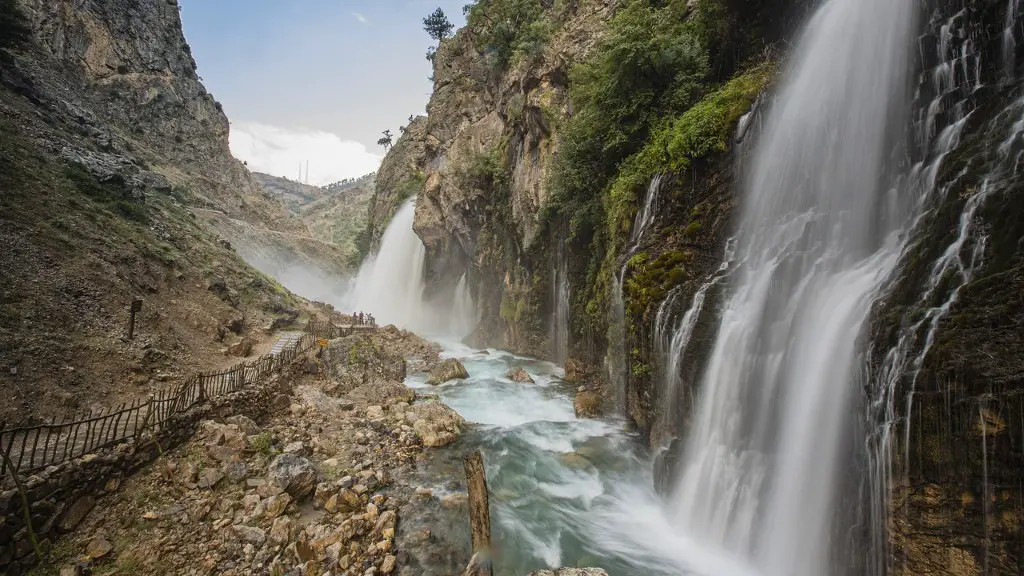The Yangtze River is the third longest river in the world and is the main source of water for over 450 million people. It’s no wonder that over recent decades, unsustainable economic activities in the river basin has had a major impact on its water quality, leading to severe pollution. It is high time to face the facts of this adverse situation and to understand the causes and implications of this complex dilemma.
According to experts, before the early 1950s, the river’s water was mainly polluted by the waste from industry and agricultural chemicals from upstream. From the 1950s onwards, rapid urbanization and industrialization in the river basin began to take a toll on the water quality, with a dramatic rise in the amount of industrial and domestic effluents being released into the Yangtze.
It is reported that nearly 70 percent of all sources of major pollution in China are located around the Yangtze River, making it the most polluted river in the country. A variety of pollutants, including heavy metals, nitrogen, phosphorus, and a range of organic chemicals, are being discharged into the river without effective treatment. This includes a large amount of raw sewage, which has caused a serious decrease in water quality and a sharp rise in pathogenic bacteria levels. Additionally, fast-flowing agricultural runoff has contributed to siltation, resulting in the destruction of aquatic habitats and aquatic organisms.
Moreover, in recent years climate change has become an increasingly important factor in contributing to the water pollution of the Yangtze. Experts point out that due to the increasing frequency and intensity of extreme precipitation, the amount of pollutants discharged into the river basin is increasing significantly, resulting in reduced water quality.
Given the devastating impacts of Yangtze River pollution, it is crucial for the China government to act with urgency and find tangible solutions to the problem. This requires a multi-pronged approach, from enforcing stricter pollution laws to designing long-term plans for sustainable development. In doing so, the government will be able to reduce the amount of pollutants entering the river, restore water quality and protect the vital source of water supply for hundreds of millions of people.
How Are Stakeholders Addressing the Pollution of the Yangtze River?
In tackling the challenge of Yangtze River pollution, a variety of stakeholders have mobilized to address the problem. They include local, regional and national government initiatives, recently established non-profit organisations and professional bodies.
On a local level, initiatives such as the Yangtze River Basin Ecosystem Rehabilitation and Protection Programme have been launched, aiming to reduce the amount of pollutants entering the river basin. This involves pinpointing the sources of pollution and introducing effective wastewater treatment in the industrial, agricultural and urban sectors. Through these initiatives, collaborators are also trying to raise public awareness and increase people’s knowledge of the issue.
At the same time, national and regional governments are taking effective and concrete steps to address the issue. In particular, the Chinese central government has implemented various measures such as setting emission standards, tightening the control of pollutant sources and establishing strict environmental protection laws, which aim to reduce the environmental impact of the industrial and agricultural sectors.
In addition, professional organisations have been actively involved in working on the problem. For example, the International Association for the Yangtze River is dedicated to raising global awareness about the urgent need to preserve the status of the Yangtze River Basin and highlighting the current threats it is facing from human-induced activities.
How Is the Pollution Impacting Wildlife and Human Health?
The pollution of the Yangtze River is having a huge impact on wildlife and human health. For instance, the intense pollutants present in the water are poisoning the aquatic species living there and are causing a massive decline of populations of fish and other species. This is a major threat to biodiversity in the area and also to the livelihood of thousands of fishermen.
At the same time, the degradation of water quality is having a detrimental effect on human health, as it is causally linked to various illnesses, such as skin allergies and respiratory diseases. Furthermore, polluted water is posing a major threat to the safe drinking water supply of millions of people, who rely on the river for drinking and irrigation purposes.
What Can Be Done to Limit the Pollution?
Given the urgent need to address the grave issue of Yangtze River pollution, government bodies and non-profit organisations have been working on finding solutions to contain and reverse the rise of pollutants. This involves immediate as well as long-term solutions and requires the collaboration of all stakeholders.
In the short-term, governments can introduce stricter laws and regulations to prevent and control the discharge of pollutants into the river. This can involve introducing tougher punishment to offenders, such as hefty fines and closing down of businesses. Furthermore, environmental agencies across the continent should monitor and investigate cases of illegal discharging and hold perpetrators accountable.
More importantly, there needs to be an aggressive drive to shift to ‘green’ sources of energy, such as solar and wind. This includes providing financial and technological support to businesses to transition away from relying on fossil fuels and other non-renewable forms of energy. This will help to reduce emissions and pollution levels and promote the transition towards more sustainable development.
What Are the Long-Term Solutions to the Problem?
It is important to recognize that long-term solutions are equally, if not more, important in resolving the Yangtze River pollution crisis. This requires governments to adopt and introduce a wide range of initiatives that have tangible and sustainable impacts.
For instance, governments should strive to reduce the use of fertilizer and pesticide in farming and promote sustainable practices, such as integrated crop rotation and the use of organic farming methods. Additionally, there should be an increased investment in wastewater treatment technology and infrastructure to ensure that the released pollutants are treated effectively.
In addition, there should also be more efforts to raise public awareness about the issue. This includes educating people on the negative consequences of indiscriminate discharge of pollutants and engaging citizens in campaigns against water pollution. By doing so, governments can build public pressure and mobilize people to take direct action against polluters.
What Steps Has China Taken to Combat the Problem?
China’s response to the Yangtze River pollution crisis has been vigorous and proactive. In 2011, the Chinese government announced its ‘Three River Protection’ campaign, with the goal of safeguarding the Yangtze River Basin and reducing the amount of pollutants being discharged into the river.
During this time, the government established a series of stringent pollution control measures and enforced specific regulations to reduce the amount of wastewater being released into the river. These include setting stricter discharge limits, increasing public awareness campaigns and levying heavier fines on violators.
In addition, the government released its 12th Five-Year Plan, which sets out specific targets and objectives for reducing emissions across the country. This includes introducing a range of policies and regulations, such as the revised Air Pollution Control Law and the Water Pollution Prevention and Control Law, to help reduce pollution levels and protect the Yangtze River Basin.
What Are the Challenges to Addressing the Problem?
In working towards eliminating the pollution of the Yangtze River, there are several key challenges that need to be addressed. Firstly, there is a need for greater collaboration between different stakeholders, such as government bodies and non-profits, to ensure that any short-term and long-term measures are implemented properly and effectively.
This is also linked to the difficulty of introducing change in the river basin. Despite the need to reduce the amount of pollutants entering the river, it is challenging to convince local businesses to change their production and operational models. There is also the issue of enforcing stricter environmental laws, as many businesses are disinclined to absorb the additional costs of sustainable practices.
Lastly, the issue of how to finance sustainable projects also needs to be addressed. Finding a balance between economic growth and environmental protection is essential and requires innovative financing solutions, such as public-private partnerships and crowd-funding. This will ensure that projects are adequately funded and that resources are allocated efficiently to reduce the impacts of the pollution.
What Is the Outlook for the Future of the Yangtze River?
Although the challenges of Yangtze River pollution are immense, enhanced collaboration between all stakeholders and greater public awareness about the issue will hopefully lay the groundwork for restoring the water quality and protecting the river basin in the long-term.
As such, there is justifiable hope and expectation that the governments, non-profit organisations and other stakeholders working on the issue will be able to come up with tangible solutions to address the pollution problem, enabling the Yangtze River to become a source of sustenance and rejuvenation for generations to come.





